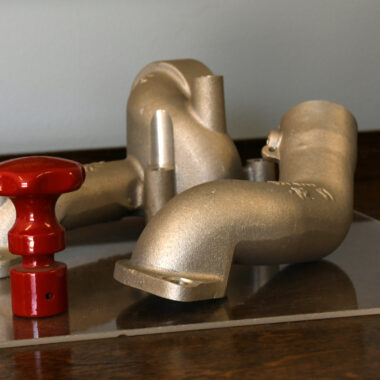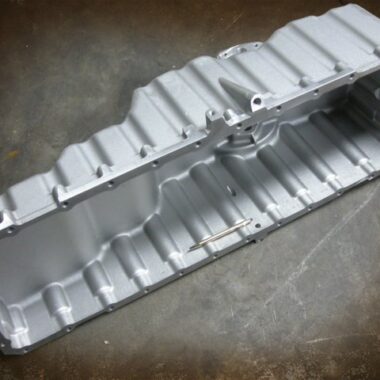Development Released: Advancements About Aluminum Casting
Wiki Article
Crafting Perfection: Just How to Attain High-Quality Aluminum Castings Every Time
In the realm of aluminum casting, the search of perfection is a continual journey that calls for a precise approach and a keen understanding of the details involved. Attaining regular high-grade light weight aluminum castings demands a comprehensive understanding of the processes, from selecting the suitable alloy to executing accurate mold and mildew designs and thoroughly controlling casting parameters. The real mastery lies in the capacity to apply these elements effortlessly to produce remarkable castings every time. As we discover the intricacies of crafting perfection in aluminum castings, discovering the crucial approaches and techniques that cause impressive results becomes critical for those pursuing quality in this customized area.Comprehending Aluminum Casting Procedures
Light weight aluminum casting procedures, important in the manufacturing market, include the complex improvement of liquified light weight aluminum right into strong types via a collection of carefully controlled steps. Comprehending these procedures is paramount to achieving top quality aluminum spreadings consistently - about aluminum casting. The primary methods used in light weight aluminum casting are pass away casting, sand casting, and investment casting
Each of these procedures has its benefits and is picked based on elements like complexity, volume, and preferred finish of the aluminum casting. about aluminum casting. Comprehending the ins and outs of these approaches is critical for producers aiming to create premium light weight aluminum castings consistently
Choosing the Right Aluminum Alloy
Selecting the appropriate aluminum alloy is an essential choice in the production of premium aluminum castings. The option of alloy substantially impacts the homes and qualities of the end product. Various aluminum alloys offer differing levels of strength, deterioration resistance, machinability, and thermal conductivity. When choosing an aluminum alloy for spreading, it is vital to think about the specific needs of the application to guarantee optimum performance.One of the most commonly used light weight aluminum alloys for spreading is A356 - about aluminum casting. For applications needing high toughness, 7075 aluminum alloy is a popular option due to its phenomenal strength-to-weight proportion.
In addition to mechanical residential properties, factors to consider such as cost, availability, and post-casting processes should likewise influence the selection of the ideal light weight aluminum alloy. By thoroughly reviewing these elements, manufacturers can ensure the manufacturing of high-grade light weight aluminum spreadings that satisfy the wanted requirements.
Implementing Proper Mold And Mildew Design
Developing a reliable mold and mildew layout is critical for making sure the effective manufacturing of top notch aluminum castings. Correct mold design plays a substantial duty in accomplishing the wanted attributes of the last product. To implement an effective mold design, factors such as product flow, cooling prices, and part geometry need to be thoroughly considered.One trick element of mold layout is making sure proper filling and solidification of the aluminum within the mold and mildew cavity. This entails creating jogger and gating systems that assist in smooth metal circulation and avoid issues such as air entrapment or incomplete filling. Furthermore, incorporating air conditioning channels into the mold layout assists regulate solidification rates and lower the threat of porosity or shrinking defects.

Controlling Casting Parameters

Making Certain Post-Casting High Quality Checks
To maintain the excellent quality of aluminum spreadings, complete post-casting quality checks anonymous are crucial. After the casting procedure is completed, it is critical to make sure that the end products fulfill the desired requirements and criteria. Among the primary high quality checks entails checking the surface finish of the spreadings to recognize any kind of problems such as porosity, splits, or surface irregularities. This aesthetic inspection is usually supplemented by non-destructive testing techniques like ultrasonic screening or color penetrant inspection to find internal problems that might endanger the integrity of the casting.Dimensional accuracy is one more important facet that has to be validated during post-casting quality checks. Measurements of key dimensions and tolerances must be required to verify that the spreadings comply with the needed specs. In addition, mechanical properties such as hardness, tensile strength, and influence resistance may require to be reviewed via product testing to guarantee that the spreadings have the essential stamina and durability for their intended application.
Conclusion
In conclusion, achieving high-quality light weight aluminum spreadings calls for a detailed understanding of the spreading processes, selecting the appropriate alloy, making molds properly, managing spreading parameters meticulously, official site and carrying out post-casting high quality checks carefully. By following these actions, suppliers can regularly produce aluminum spreadings that fulfill the greatest requirements of top quality and efficiency.Attaining constant premium aluminum spreadings requires a thorough grasp of the procedures, from choosing the appropriate alloy to implementing exact mold styles and meticulously regulating casting criteria. The main approaches utilized in light weight aluminum casting are pass away casting, sand spreading, and investment spreading.
Financial investment casting, likewise known as accuracy spreading, involves producing wax patterns that are coated in ceramic to create molds.Choosing the appropriate aluminum alloy is a critical choice in the production of top notch light weight aluminum castings.Ensuring precise control over spreading parameters is vital for keeping consistency and quality in aluminum casting manufacturing.
Report this wiki page